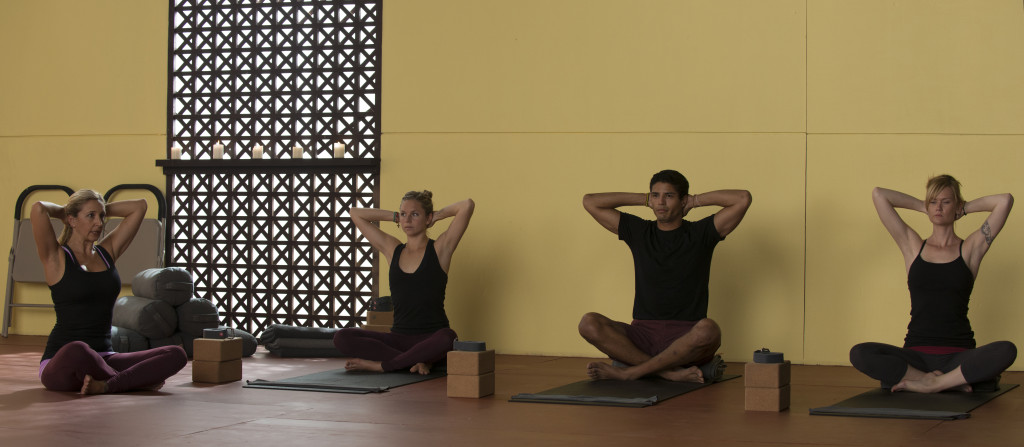In the next few months we will be featuring our resident teachers in our newletter. At Udaya we have three levels of teachers resident, guest, and community. We will be explaining why we are catogorizing each in a related blog post, but for now allow us to present:
Jules Mitchell

Jules Mitchell and Yoga
Jules travels the wold teaching yoga teachers, doctors, kenesiologists, and physiologists how to move in a cohesive way. Her classes are very specific and highly detailed. They are not something you would expect to find in a typical flow class. This is exactly why we at Udaya love her. If you have noticed from our presentation of yoga and most likely will in the future we tend to gravitate to teachers who have a unique perspective on the practice. There are a thousand online yoga sites offering your typical vinyassa class but none that offer the unique perspective on the practice that Jules does.
A typical class with Jules Mitchell offers you the opportunity to explore each pose from the vantage point an anatomical perspective. For example in the standing series class you will be asked to notice how each pose responds from the perspective of the feet. As you move from pose to pose Jules will give you detailed instructions on how to set up the part of the body she is teaching from and then you will be asked to analyze the response of the body based on the focus you are taught. Doing yoga in this manner will invoke a degree of attention that will help you access poses in an entirely new light.
Jules will be leading our anatomy of yoga section on the upcoming 500 hour Udaya Teacher training offered sometime in the spring and is currently working on her thesis which will be published in the new year. We recently asked Jules the following:
An Interview with Jules Mitchell
Udaya: You said in the interview you don’t want to be a yoga teacher what do you mean?
Jules: I am at a place professionally, where I teach a lot more than yoga. Technically, I am a movement therapist. I teach corrective exercises and stretches that restore the body so that the musculoskeletal system can work in harmony with all the other systems of the body. Sometimes I use classical yoga postures, but not exclusively. My work doesn’t always fit into the popular notion of yoga.
Udaya: In the yoga community there are a lot of teachers that teach a lot of different ways to do a pose – is one style right and the other wrong?
Jules: The most important thing a new practitioner should know is that there is no perfect pose and there is no perfect style. It’s very easy to become dogmatic about a style of yoga (or teacher) that you love. New students often get caught up in the “right” or “wrong” and that limits the potential for learning. Keep an open mind and accept that what you know about your body today will be different tomorrow. What you know about your practice today will be challenged tomorrow. It’s a roller coaster. Enjoy the ride!
Udaya: How often do you think one should practice yoga?
Jules: You should always be practicing yoga. My true yoga practice began when I stopped defining my yoga practice as a 90 minute sequenced class. I am practicing whenever I am aware of my body position. Sometimes it’s during a 90 minutes class, sometimes it is a selection of 2 or 3 classical yoga poses that I need in that moment, sometimes it’s going for a walk, sometimes it is varying my position while working at my desk – standing, sitting, squatting, etc. You get the idea, right? We tend to get obsessed by the poses. The poses mean nothing. Moving well means everything.
Udaya: Recently there has been a lot of controversy about yoga and injury – do you think yoga could cause injury?
Jules: Anytime there is movement, there is the potential for injury.
Research
Jules is currently researching and writing her master’s thesis on the biomechanics of soft tissues as they relate to flexibility training. Her goal is to package the information into a digestible and interesting book that yoga enthusiasts will use as a reference guide. She finds that the emphasis on stretching in the yoga community is often misunderstood. She intends to dispel common myths about yoga and stretching while educating the public about the properties of different tissues (mainly muscles, fascia, tendons, and ligaments) and how they respond to forces.

Write Your Comment
Leave a comment